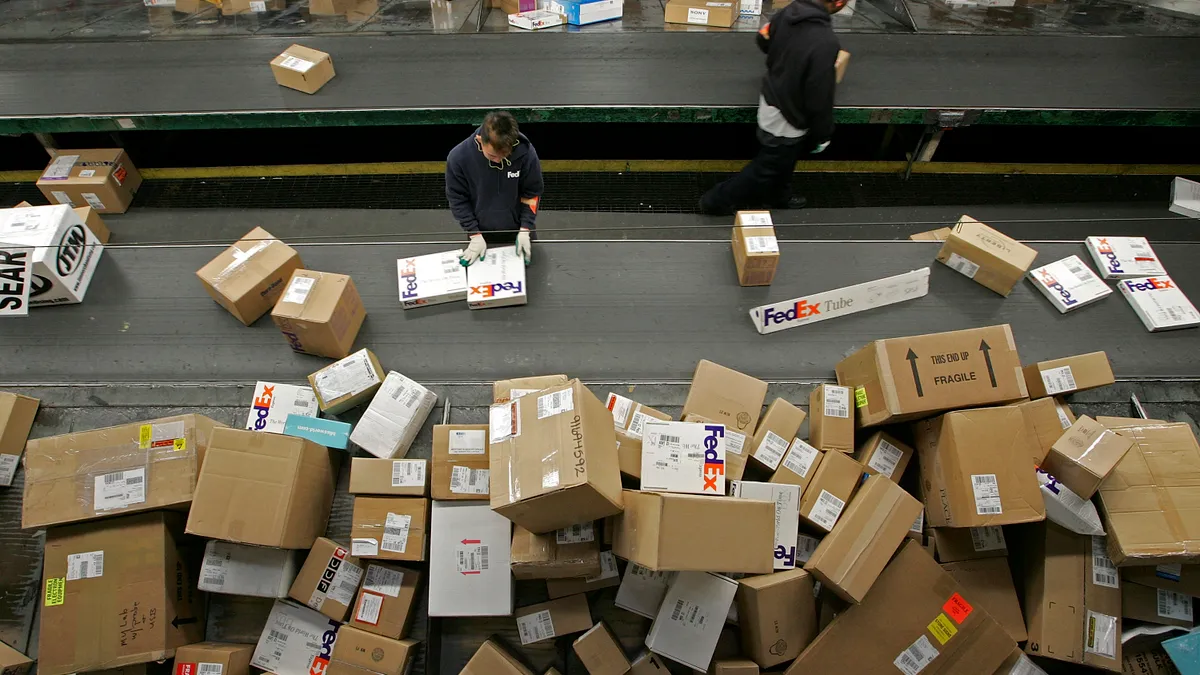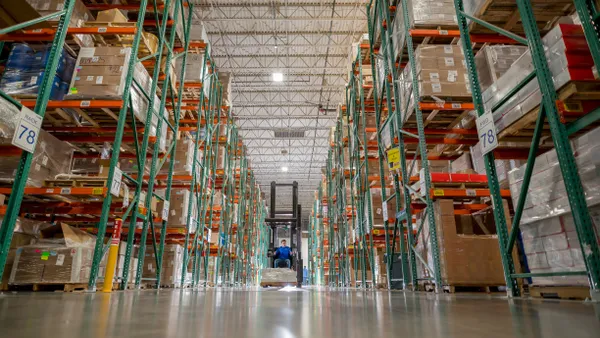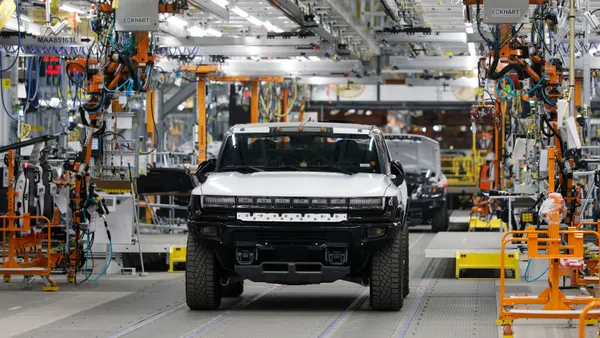Dive Brief:
- Product returns will increase in Q4 as e-commerce activity hits peak season highs, according to 65% of respondents to a Reverse Logistics Association survey. Coinciding with this expected growth, more than half of respondents anticipate the cost of returns to increase in an expensive supply chain environment.
- "The number of returns and costs associated with them continues to climb adding to an already tough environment of rising freight costs, capacity constraints and delays," said Tony Sciarrotta, executive director of RLA, in a statement accompanying the survey results.
- But a minority of respondents (32%) said their returns will either stay the same or not increase at all. "Supply chain challenges will likely keep holiday sales below expectations, which will also impact potential returns," one respondent told the RLA.
Returns activity expected to jump in Q4
Dive Insight:
Persistent supply chain bottlenecks throughout 2021 have influenced the holiday season approaches of retailers and consumers, which could affect when and how often shoppers return goods following the rush in purchases.
Some retailers enticed customers to shop earlier this season to mitigate shipping bottlenecks and out-of-stock scenarios. This means traditional "peak days" such as Black Friday and Cyber Monday will be less of a demand outlier than in previous years, said Rob Garf, Salesforce VP and GM of retail, in an email.
According to Salesforce, U.S. shoppers spent $13.4 billion on Black Friday, up 5% YoY. Garf defined this growth as moderate.
"It's been less about Cyber Week and more about Cyber November," Garf said. "It's always a retailer's dream to pull demand early in the fall, and with supply chain bottlenecks and fears of inflation, consumers did shop early and often."
Those who waited to shop after Thanksgiving were met with low holiday inventory. Per Salesforce, product catalogs over Cyber Week shrank 6% in the U.S.
"Products are taking a long time to hit the shelves giving shoppers time to look around," according to one RLA respondent. The survey, conducted in October, collected answers from 100 respondents in a variety of industries, including electronics, apparel and furniture.
Companies are also facing higher transportation, labor and warehouse costs throughout their supply chains, which increases expenses tied to reverse logistics.
In Q3, 56% of respondents to the RLA survey said their cost of returns increased. For Q4, 40% said costs will either remain the same or not increase, which the RLA said could be "due to anticipated inventory shortages and the willingness of some consumers to accept substitutions."
But retailers can't ignore the returns process amid increased online shopping activity, as e-commerce orders generate returns more frequently than brick-and-mortar purchases do. According to a National Retail Federation survey, the amount of merchandise returned as a percentage of U.S. sales in 2020 was 10.6%. For online sales, it was 18.6%.
"With digital sales increasing, many retailers are dealing with increased returns," American Eagle COO Michael Rempell said on an earnings call earlier this year. "Our challenge is, how can we make that a great experience for the customer? How could we refund money quickly; how can we get that inventory returned quickly and back into the spot where we're most likely to sell it?"
This story was first published in our Operations Weekly newsletter. Sign up here.














